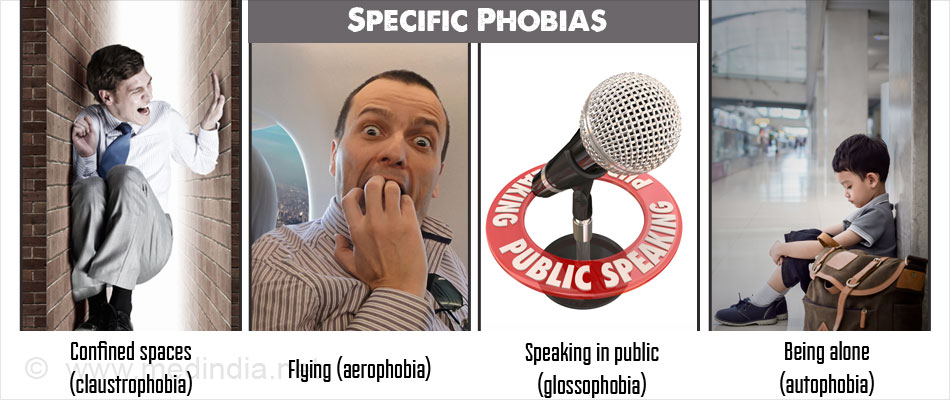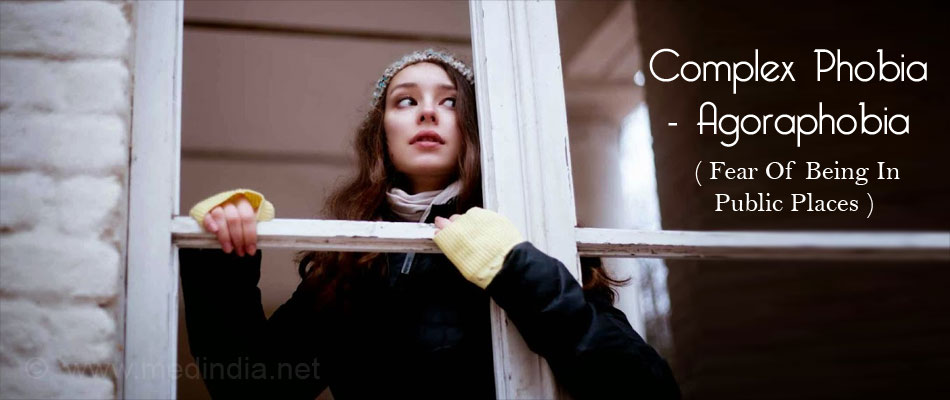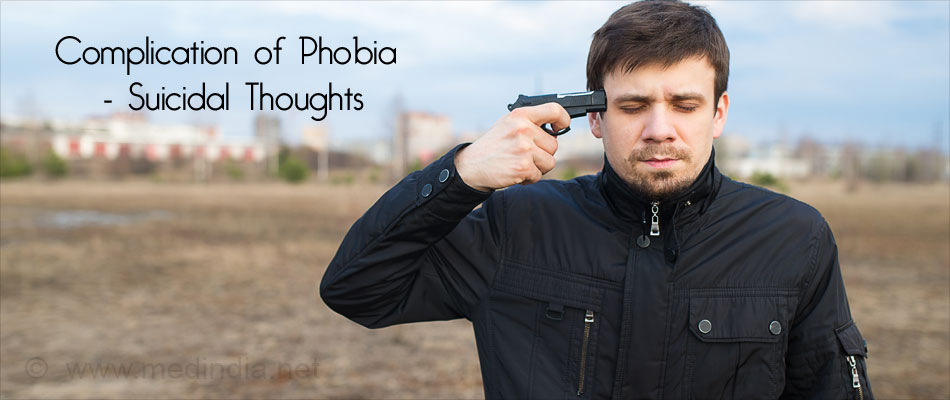A phobia is an irrational and exaggerated fear of an object or a situation that poses little or no actual danger in reality. Simple fears become phobias when a person goes to extreme lengths to avoid the distressing object or situation.
Phobias, classified under anxiety disorders are not due to a malfunction of the brain and can be effectively treated. People driven by a sense of fear begin to restrict their lives in order to avoid a frightening situation.

Phobias seem like irrational fears, but most people have a reason associated with their fears. People of all ages and from all walks of life across the world can develop phobic reactions.
People display certain typical emotional and physical reactions to objects and situations they dread. The fear may be so extreme that they may not be able to perform normal tasks and may even become totally paralyzed and immobile.
Childhood fears are common. If left unchecked they may develop into phobias later in life. Children as young as 5 years may develop phobias and may experience nightmares. Such phobias are more related to natural phenomenon such as lightning or thunder. Parents and other responsible adults in charge of a child need to address the situation and help the child overcome its fears before they grow out of proportion and haunt the child for the rest of its life.
During transitional times in their lives, children show signs of fear. Going back to school to a new class after a break can trigger signs of fear and anxiety in children. With proper guidance from parents and teachers these fears usually go away after a routine sets in. However if the child continues to live in fear especially as a victim of bullying in school, the fear persists even during adult life.
Social phobias are more likely to develop in schools and colleges. Phobias result in an irrational and instant response that creates anxiety when exposed to the object of fear. It is not unusual for a person to take extreme steps to avoid the object or situation that causes fear.
There are 530 officially recognized phobias.
The National Institute of Mental Health estimates that about 19.2 million American adults or 8.7% of people suffer from one or more specific phobias.
The fear of spiders (arachnophobia) is the most common phobia in the world - 50% of women and 10% of men fear spiders.
Women’s chances of suffering from phobias are double compared with men.
A woman’s worst phobia is the fear of snakes while a man fears being buried alive.
Some of the strangest phobias are phobophobia (fear of having a phobia), clinophobia (fear of going to bed or sleeping), chromophobia (fear of colors), arachibutyrophobia (fear of butter sticking to the roof of the mouth) and hexakosioihexekontahexaphobia (fear of the number 666).
Last but not the least, something very relevant in today’s life is nomophobia (no mobile) - the fear of leaving our phone at home.
1. Simple or Specific Phobias
People sometimes recoil in horror from a specific object, situation or activity. Mild anxiety, panic attacks while facing the source of fear and an overwhelming need to avoid the object or situation, are some of the extreme reactions associated with specific phobias. Examples of some fears are:

2. Complex Phobias
Complex phobias always involve several anxieties that can paralyze a person’s day-to-day activities. In general, they are more disabling than simple phobias, and cause more disruption in a person’s life compared to simple phobias. They often begin in adulthood and involve a deep rooted anxiety or fear of any particular situation or event.
Examples of complex phobias include:

Complex phobias can cause emotional trauma and lead to self-replicating cycles - a phobia can make you behave oddly in public and later reinforce your fear of odd behavior in public. Likewise, prolonged agoraphobia can convince you of your inability to control panic attacks thus worsening the phobic condition.
Phobias could have an evolutionary significance and they may be inherited. Extensive ongoing researches are exploring complex causes of social phobia and agoraphobia. In most types of phobias, it is believed that there may be a combination of family history, genetics, and brain chemistry, together with life situations that cause phobias and panic attacks.
Amygdala is a structure in the brain that controls the fear response. An overactive amygdala can cause anxiety in social situations.
The other risk factors associated with phobias are:
If faced with the object of fear, people experience panic and have the following symptoms:

Diagnosing a phobia is done best by a trained mental health professional. While diagnosing a phobia, mental health professionals should use clinical skills and judgment to decide whether the phobic symptoms are better explained by another disorder (such as paranoia, obsessive compulsive disorder, schizophrenia) and rule them out.
Phobias are diagnosed as fears that adult patients recognize as irrational. In generalized anxiety disorders the anxiety is more broad based. Doctors rely on the patient’s account of their phobic experiences.
Barring some overlaps, each type of phobia has its specific set of diagnostic criteria. Diagnostic criteria common to all phobias are:
Phobias can have a serious impact on a person's lifestyle, due to the distress and symptoms suffered.
1. Specific Phobias:
People with specific phobias can be treated through basic counseling, psychotherapy and maybe medicines.

2. Social Phobias:
Psychiatrists sometimes find it necessary to treat social phobia with a combination of cognitive behavior therapy, antidepressants, benzodiazepines and beta-blockers. Medicines are used only for a short time and always alongside behavioral therapy. Scientists have recently zeroed in on oxytocin hormone treatment for those suffering from social phobia.
People with specific phobias could also have:
